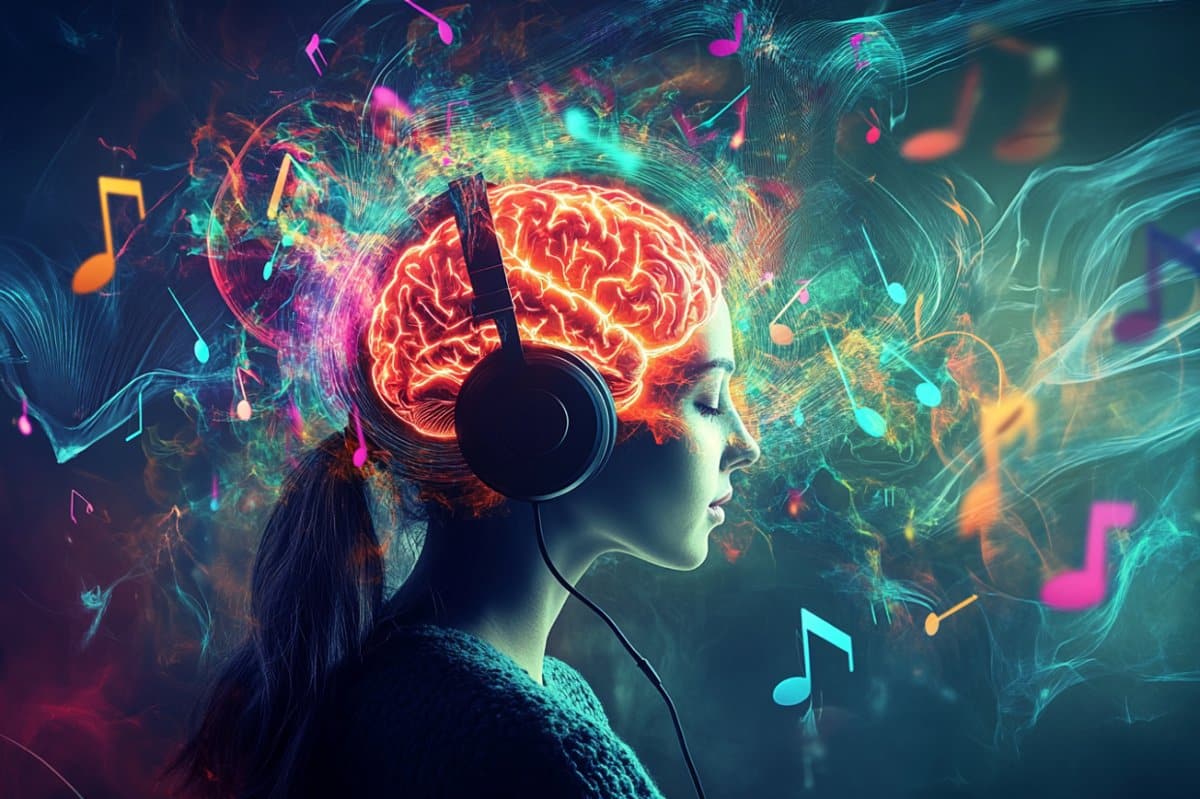Our Terms & Conditions | Our Privacy Policy
Music-Induced “Chills” Trigger Natural Opioids in the Brain
Summary: Listening to favorite music activates the brain’s opioid system, which is involved in feelings of pleasure and pain relief, according to a new PET imaging study. Researchers found that music-induced “chills” are linked to the release of natural opioids in key brain areas.
Participants with higher opioid receptor density showed stronger brain responses to music, highlighting individual differences in musical enjoyment. These findings explain why music can evoke powerful emotional reactions and suggest potential applications in pain therapy and mental health treatment.
Key Facts:
- Opioid Release: Favorite music triggered the release of opioids in brain regions tied to pleasure.
- Individual Variation: People with more opioid receptors had stronger brain responses to music.
- Therapeutic Potential: Music-induced opioid activity may help explain music’s pain-relieving effects.
Source: University of Turku
A new imaging study by the Turku PET Centre in Finland showed that listening to favorite music affects the function of the brain’s opioid system.
Music can evoke intense pleasure, sometimes experienced physically as pleasant “chills.” While the effect of music on pleasure is clear, the brain mechanisms behind musical enjoyment are not yet fully understood.
 The results show that favorite music influenced opioid release in several brain areas associated with the experience of pleasure. Credit: Neuroscience News
The results show that favorite music influenced opioid release in several brain areas associated with the experience of pleasure. Credit: Neuroscience News
The brain’s opioid system is known to be involved in pleasurable experiences related to survival-critical behaviors, such as eating and sex.
This new study from the Turku PET Centre in Finland demonstrates for the first time that listening to favorite music also activates the brain’s opioid receptors.
The study measured the release of opioids in the brain using positron emission tomography (PET) while participants listened to their favorite music.
Additionally, functional magnetic resonance imaging (fMRI) was used to examine how the density of opioid receptors affects brain activation when listening to music.
The results show that favorite music influenced opioid release in several brain areas associated with the experience of pleasure.
The release of opioids was also linked to how often participants reported experiencing pleasurable chills while listening to music.
Furthermore, individual differences in the number of opioid receptors correlated with brain activation during music listening: the more opioid receptors participants had, the more strongly their brains reacted in MRI scans.
“These results show for the first time directly that listening to music activates the brain’s opioid system.
“The release of opioids explains why music can produce such strong feelings of pleasure, even though it is not a primary reward necessary for survival or reproduction, like food or sexual pleasure,” says Academy Research Fellow Vesa Putkinen from the University of Turku.
Professor Lauri Nummenmaa adds: “The brain’s opioid system is also involved in pain relief. Based on our findings, the previously observed pain-relieving effects of music may be due to music-induced opioid responses in the brain.”
The study provides significant new insight into how the brain’s chemical systems regulate the pleasure derived from music.
The results may also help develop new music-based interventions, for example, in pain management and the treatment of mental health disorders.
About this music and neuroscience research news
Author: Tuomas Koivula
Source: University of Turku
Contact: Tuomas Koivula – University of Turku
Image: The image is credited to Neuroscience News
Original Research: Open access.
“Pleasurable music activates cerebral µ-opioid receptors: a combined PET-fMRI study” by Vesa Putkinen et al. European Journal of Nuclear Medicine
Abstract
Pleasurable music activates cerebral µ-opioid receptors: a combined PET-fMRI study
Purpose
The μ-opioid receptor (MOR) system mediates incentive motivation and the hedonic component of primary rewards such as food and sex. However, there is no direct in vivo evidence for the involvement of the MOR system in pleasure derived from aesthetic rewards such as music.
Methods
We measured MOR availability with positron emission tomography (PET) and the agonist radioligand [11C]carfentanil with high affinity for MORs during the listening of pleasurable music and neutral baseline condition. Haemodynamic responses associated with dynamic pleasure ratings during listening to music and control stimuli were measured using functional magnetic resonance imaging (fMRI).
Results
The PET results revealed that pleasurable music increased [11C]carfentanil binding in several cortical and subcortical regions, including ventral striatum and orbitofrontal cortex, known to contain “hedonic hotspots”. [11C]carfentanil binding in the nucleus accumbens during the music condition was associated with number of pleasurable chills, linking the subjective experience of pleasure to striatal opioid release.
Individual variation in baseline MOR tone influenced pleasure-dependent haemodynamic responses during music listening in regions associated with interoceptive, sensorimotor, and reward processing.
Conclusions
These findings provide the first neuroimaging evidence that pleasurable music modulates MOR system function. The results indicate that the μ-opioid system governs complex aesthetic rewards in addition to biologically essential primary rewards.
[ad_1]
Images are for reference only.Images and contents gathered automatic from google or 3rd party sources.All rights on the images and contents are with their legal original owners.
[ad_2]



Comments are closed.